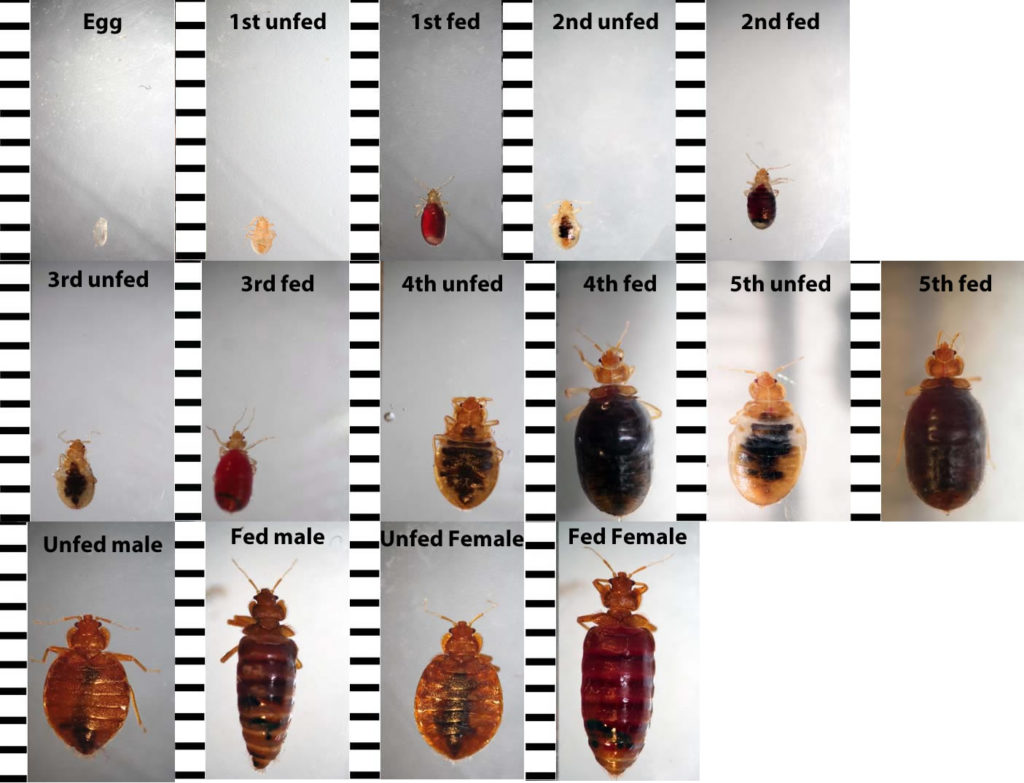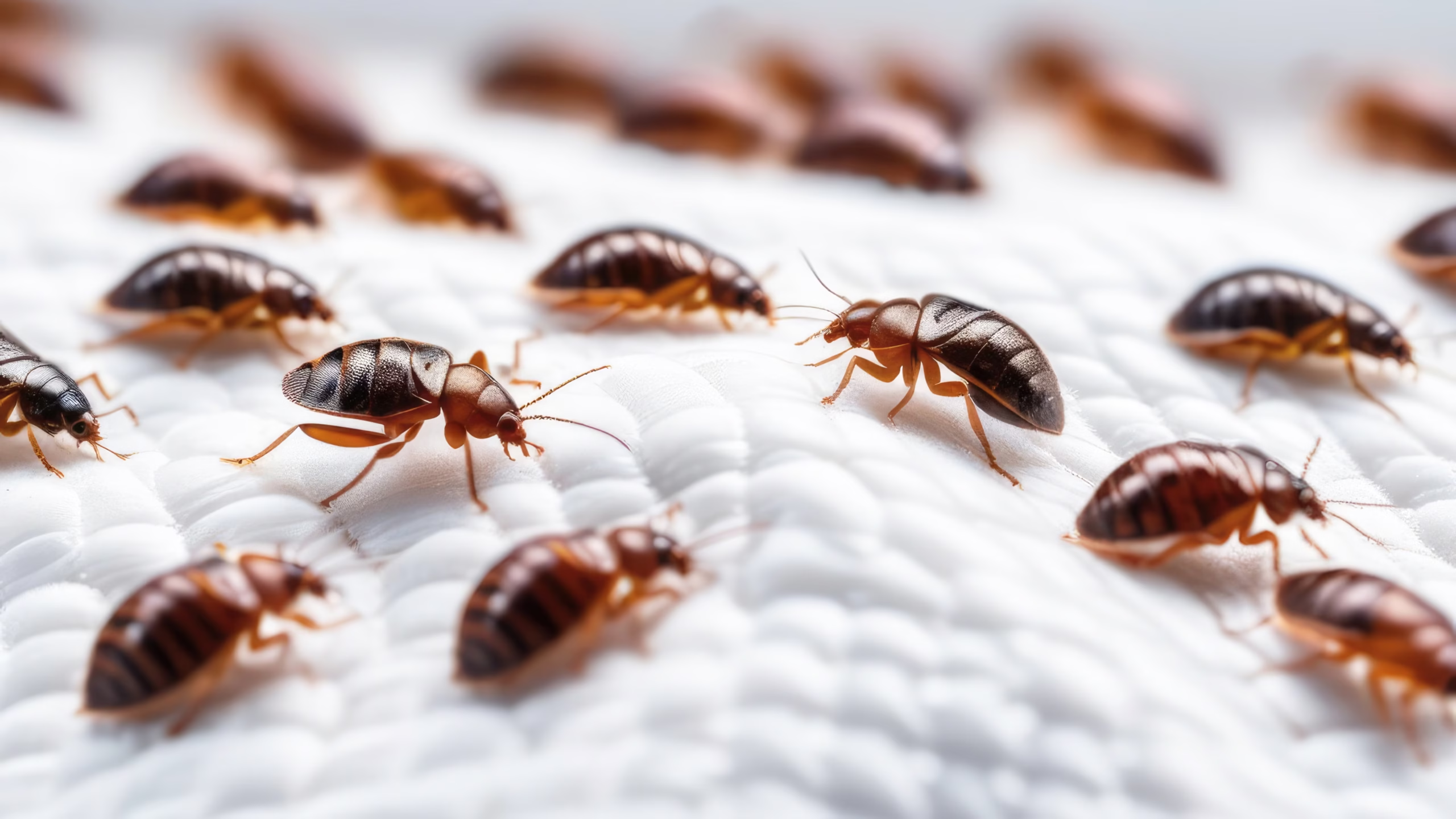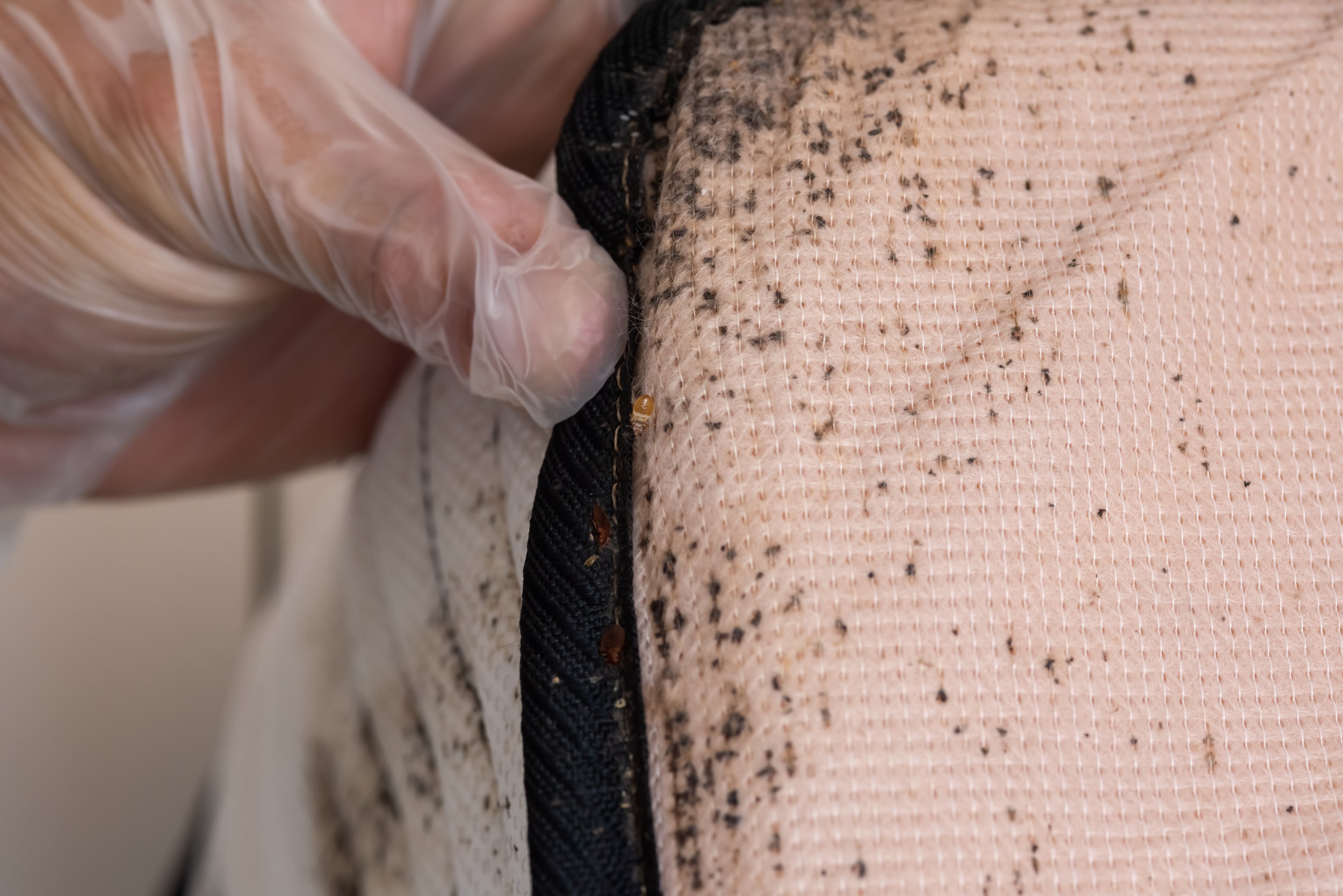Florida’s subtropical environment featuring consistent warmth, abundant humidity, and mild winters allows bed bugs to remain active and reproduce nearly nonstop. In Port Charlotte, a popular coastal area along Florida’s Gulf Coast, these elusive pests often infiltrate single-family homes, short-term rentals, or commercial properties through luggage, secondhand furniture, or personal belongings. By the time individuals observe small black specks on sheets or experience itchy bites, bed bugs may already be concealed in mattress seams, upholstered seams, or tight gaps behind baseboards. This page explores why bed bugs prosper in Florida, how to identify an infestation, and why partnering with a professional bed bug exterminator for bed bug treatments is critical for eradicating them fully.
Whether you operate a property in Port Charlotte or oversee rentals serving Englewood and Punta Gorda, locating bed bugs swiftly and employing multi-stage, specialized treatments defends occupants from widespread infestations, restless nights, and repeated do-it-yourself attempts that often miss hidden eggs or newly hatched nymphs lurking in deeper seams or behind walls.
Why Bed Bugs Thrive in Florida
Mild Winter Temperatures
In cooler areas, subfreezing winter conditions naturally slow or kill bed bugs for months. Florida’s gentle cold season rarely hits freezing, letting bed bugs feed and lay eggs indoors all year. Climate-controlled interiors (about 65–85°F) reinforce ongoing activity for every bed bug life stage egg, nymph, and adult unless occupant or manager interventions interrupt them.
Constant Movement of People & Goods
Florida’s high tourism, relocations, and secondhand marketplace increase the circulation of luggage or furniture prime bed bug carriers. In Port Charlotte, occupant turnover or short-term rental guests can inadvertently deliver bed bugs if occupant or housekeeping checks are lax. A single egg-laden couch or suitcase can rapidly spark a multi-room infestation if left unnoticed.
Abundant Concealment Spots
Bed bugs flatten to fit into mattress edges, box springs, upholstery folds, or along baseboards. They hide by day, feeding on sleeping occupants at night. Individuals often realize they have bed bugs only after noticing bites or black pepper-like flecks on bedding by which point the pests might inhabit multiple nooks or behind walls.
Rapid Reproductive Cycle
A single female bed bug can lay multiple eggs daily, each hatching in about two weeks under Florida’s mild winter climate. Nymphs mature in roughly one month, each potentially producing new eggs unless occupant or professional measures intervene. A small infiltration can escalate into a multi-floor outbreak if occupant or manager detection lags.

Telltale Signs of a Bed Bug Infestation
- Nighttime Bites or Red Welts
- Typically on arms, legs, or the neck areas exposed while sleeping forming small, itchy bumps aligned in lines or clusters.
- Some individuals show pronounced bite welts; others have milder or delayed signs, slowing occupant realization bed bugs are present.
- Typically on arms, legs, or the neck areas exposed while sleeping forming small, itchy bumps aligned in lines or clusters.
- Black Flecks or Blood Marks on Linens
- Tiny black droppings on sheets, pillows, or mattress edges.
- Rusty smears appear if bed bugs get crushed after feeding.
- Tiny black droppings on sheets, pillows, or mattress edges.
- Adult Bed Bugs
- Adults measure 5–7 mm, apple-seed shaped, and flattened when not engorged. They turn red-brown after a blood meal.
- Nymphs are smaller, pale, typically tucked deeper into cracks or folds until nighttime feeding.
- Adults measure 5–7 mm, apple-seed shaped, and flattened when not engorged. They turn red-brown after a blood meal.
- Eggs & Shedded Skins
- Pinhead-sized, whitish eggs adhered to corners of mattresses, box springs, or behind baseboards.
- Translucent exoskeletons from nymph molts signify regular breeding cycles.
- Pinhead-sized, whitish eggs adhered to corners of mattresses, box springs, or behind baseboards.
- Possible Musty Odor
- Dense infestations may produce a faint, sweetish or musty smell from pheromones.
- Physical evidence (bites, droppings, occupant sightings) remains more definitive than odor alone.
- Dense infestations may produce a faint, sweetish or musty smell from pheromones.
- Occupant or Guest Complaints
- In multi-room or short-term rental properties apartments, hotels occupants consistently report bites or see tiny bugs near beds.
- Rapid occupant or manager responses prevent bed bugs from traveling occupant luggage or corridor routes to other rooms.
- In multi-room or short-term rental properties apartments, hotels occupants consistently report bites or see tiny bugs near beds.
Why Ignoring Bed Bugs Is Risky
Rapidly Growing Infestations
Each female bed bug lays multiple eggs daily, hatching in 2 weeks in Florida’s gentle cold season. Nymphs become reproductive adults in 1 month, further fueling egg-laying if occupant or manager detection doesn’t stop them. A minor infiltration soon saturates multiple rooms, straining occupant tolerance.
Sleep Interruptions & Worry
Because bed bugs feed at night, occupant rest suffers. Frequent bites spark occupant insomnia or fear, scanning bedding for elusive pests. Short-term rentals or hospitality sites near Englewood or Punta Gorda risk occupant backlash or negative reviews if bed bugs go unchecked.
Spreading to Neighboring Spaces
In multi-room or multi-unit contexts apartments, condos, hotels bed bugs travel occupant luggage, baseboard seams, or occupant traffic, saturating entire floors if occupant or staff housekeeping remains insufficient.
Elevated Treatment Complexity & Cost
Catching a minor bed bug presence early usually entails partial insecticide or steam. Allowing them to embed behind walls or across multiple floors triggers occupant relocation for entire-room heat or repeated chemical usage, increasing occupant disturbance and total cost.
Health & Reputation Harms
Though bed bugs rarely transmit illnesses, continuous bites provoke itching, potential skin infections from scratching, and occupant dread of unseen nocturnal feeders. Lodging or property owners near Punta Gorda face occupant dissatisfaction or brand harm if bed bugs linger out of sight.

Why a Professional Bed Bug Exterminator Is Crucial
Thorough Inspections
A bed bug exterminator checks mattresses, furniture seams, baseboards, and behind décor for excrement flecks, eggs, or adult bugs. Some rely on canines to detect hidden pockets. Proper detection ensures occupant synergy plus broad exterminator coverage from eggs to adult bed bugs.
Multi-Faceted Solutions
Professionals typically use vacuuming, steam, chemical insecticides, or entire-room heat to kill bed bugs at every stage. Single-step occupant efforts like random sprays often destroy visible adults only, leaving behind unhatched eggs or newly emerged nymphs lodged deeper.
Heat Treatments
For wide-ranging or multi-room outbreaks, professionals raise interior temperatures above 120°F to kill bed bugs (and eggs) behind walls, in electronics, or heavy furniture. Occupants usually leave for several hours while exterminators confirm uniform heat coverage residue-free but comprehensive.
Targeted Chemical Sprays & Dust
Residual insecticides or dust in mattress seams, furniture folds, or baseboard cracks kill bed bugs crossing those areas post-feeding. If occupant sightings linger, follow-up spot treatments or insect growth regulators address newly hatched nymphs. Professionals place chemicals strategically, minimizing occupant or pet exposure.
Follow-Up & Occupant Synergy
Because eggs hatch 2 weeks post-laying, occupant or professional re-check visits confirm newly emerged nymphs also face lethal conditions. Occupants may encase mattresses, launder items on hot cycles, or remove heavily infested pieces ensuring bed bug breeding cycles end entirely.
Typical Methods for Bed Bug Treatments
- Inspection & Infestation Assessment
- Exterminators investigate bedding, furniture edges, baseboards, or behind décor for droppings, eggs, or adult evidence.
- Deciding if bed bugs infest just one bedroom or multiple floors shapes occupant synergy plus complete exterminator coverage.
- Exterminators investigate bedding, furniture edges, baseboards, or behind décor for droppings, eggs, or adult evidence.
- Vacuuming & Steam
- Vacuuming surfaces cuts down adult bed bugs and egg numbers quickly.
- Steam (200°F) kills bed bugs on contact, reaching deeper upholstery folds or mattress seams, chemical-free.
- Vacuuming surfaces cuts down adult bed bugs and egg numbers quickly.
- Chemical Insecticides
- Residual sprays or dust in cracks, bed frames, furniture folds, or baseboards hamper bed bug movement post-feeding.
- Insect growth regulators halt nymph maturity, preventing repeating egg cycles.
- Residual sprays or dust in cracks, bed frames, furniture folds, or baseboards hamper bed bug movement post-feeding.
- Heat Treatments
- Occupants vacate for hours while technicians raise indoor temps to 120–135°F.
- Lethal heat penetrates electronics, walls, or large furniture, eliminating bed bugs and eggs thoroughly with no chemical leftover.
- Occupants vacate for hours while technicians raise indoor temps to 120–135°F.
- Mattress & Box Spring Encasements
- Zippered covers trap leftover bed bugs in bedding, starving them when they can’t feed.
- Occupants regularly check covers for tears or black flecks indicating infiltration.
- Zippered covers trap leftover bed bugs in bedding, starving them when they can’t feed.
- Clutter Reduction & Laundering
- Occupants wash bedding, curtains, or clothes on hot cycles, thoroughly drying them to destroy eggs or nymphs.
- Reducing clutter removes potential regrouping spaces for bed bugs after occupant or pro treatments.
- Occupants wash bedding, curtains, or clothes on hot cycles, thoroughly drying them to destroy eggs or nymphs.
- Follow-Up & Re-Checks
- Eggs hatch 2 weeks after occupant sightings diminish. A occupant or manager follow-up ensures newly emerged nymphs also meet lethal conditions.
- Eggs hatch 2 weeks after occupant sightings diminish. A occupant or manager follow-up ensures newly emerged nymphs also meet lethal conditions.
Additional occupant synergy or repeated chemical/steam usage cements occupant certainty bed bugs are gone.

Coverage Area: Port Charlotte, Englewood, Punta Gorda
Though bed bugs persist statewide in Florida’s mild winter climate, this page emphasizes bed bug solutions in Port Charlotte plus Englewood and Punta Gorda where occupant synergy plus advanced exterminator coverage is indispensable to eradicate or thwart new infestations. Florida’s gentle cold season rarely hinders bed bug feeding or egg cycles, so occupant readiness and robust professional methods ensure wide-ranging protection or removal.
Why Choose Us
Florida-Focused Approach
We integrate recognized bed bug solutions vacuuming, steam, insecticidal sprays, entire-room heat along with occupant housekeeping shaped for Florida’s weather. Occupant synergy (discarding heavily infested items, laundering on high heat) complements full exterminator coverage, surpassing occupant attempts that overlook concealed eggs or newly hatched nymphs hidden in deeper seams.
Thorough Inspections
Before applying heat or chemicals, technicians scour bedding, furniture edges, baseboards, or wall décor for excrement flecks, eggs, or adult insects. Identifying whether bed bugs occupy solely a bedroom or multiple floors clarifies partial vs. entire-building coverage occupant or manager demands.
Safe, Precise Treatments
Professionals strategically apply insecticidal dust or sprays at bed bug hideouts mattress edges, sofa folds, baseboards rather than flooding occupant floors. For more severe or multi-room infiltration, entire-room heat kills bed bugs in walls or electronics, with occupant synergy (like removing clutter, daily vacuuming) finalizing success.
Occupant Re-Checks & Guidance
Bed bug eggs hatch 2 weeks after occupant sightings drop. Occupant or scheduled re-check visits ensure newly hatched nymphs also face lethal exposures. Occupants might encase mattresses, hot-launder bedding, or discard severely infested objects blocking bed bug breeding thoroughly.
Quick, Local Response
Serving Port Charlotte plus Englewood and Punta Gorda, we understand occupant turnover, short-term rentals, and Florida’s mild winter fueling bed bug expansions. Our proven strategies and flexible scheduling cut occupant disruption, eliminating bed bugs across all life stages efficiently.
Next Steps
Noticing unexplained bites on exposed skin, black flecks on bedding, or apple seed–sized bugs hiding in furniture folds? Contact us to learn more or schedule your service. Our bed bug treatments in Port Charlotte and in Englewood, Punta Gorda merge extensive property checks, tested extermination methods (steam, heat, insecticidal sprays), occupant housekeeping insights, plus re-check follow-ups eradicating bed bugs at every life stage while preventing repeated egg hatch cycles.
Take action promptly to shield occupants from repeated bites, foil bed bugs from burrowing deeper behind walls, and avoid occupant dissatisfaction with occupant do-it-yourself solutions missing unhatched eggs or newly emerged nymphs. Trust our Florida-based bed bug exterminator skill to find, remove, and block these stealthy parasites, preserving occupant comfort under Florida’s mild winter environment that otherwise supports constant bed bug feeding and reproduction.
